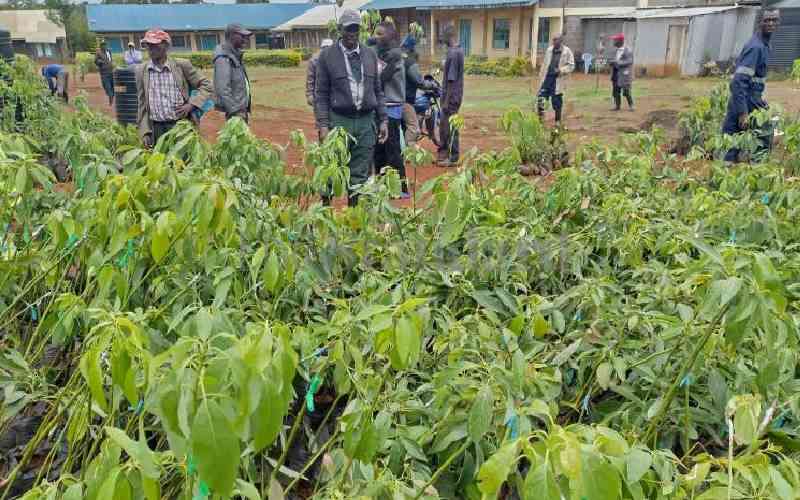 |
|
President Uhuru Kenyatta (right) is taken through the e-procurement system that was launched on Wednesday. |
It is now possible for suppliers or contractors doing business with Government to track their invoices, payments when due as well as interact online.
This follows the launch of an electronic public procurement and payments system by the National Treasury as part of the Integrated Financial Management Information System (IFMIS). “Through automation of public financial processes, the IFMIS has provided an interlinked system of internal controls providing clear audit trails and identification of the originator of all transactions,” said President Uhuru Kenyatta Wednesday while launching the system at the KICC.
The system aims to infuse transparency into the procurement process in an effort to rein in on inflated prices, increase supplier competition and shorten the procurement-payment cycle. In the past, the Government has been overcharged when procuring goods and services in a well-knit collusion of procurement officers, accountants, suppliers and contractors.
“This brings to an end manual procurement challenges the country has experienced in the past,” said President Kenyatta. In complying with the Public Financial Management Act (2012), the national government has established a Treasury Single Account (TSA), from which all payments shall be processed. The TSA will ensure payments to suppliers are expedited since the government will have greater visibility of its cash position.
“This migration of public procurement process to an electronic platform will ensure transparency, efficient an accountable system that will lock out gate keepers, brokers and middlemen,” said Deputy President William Ruto. In the past, the Government has relied on a manual public procurement system that is slow, tedious and subject to abuse.
Procurement cycle
“The country has until now relied on manual procurement processes, which have increased costs as well as delays in the procurement process. This has led to unfulfilled public expectations of high standards of governance and performance,” said Henry Rotich, Cabinet Secretary-National Treasury. The system eliminates the need for suppliers to visit government offices in person, thereby reducing the likelihood of bribes and corruption taking place.
Online approvals and automated workflow have been developed to streamline business processes, reduce timeframes for supplier selection, tender award, approvals and payments, thereby promoting transparency and accountability in the government procurement cycle.
The system has automated the tendering process, introducing a portal for registration of suppliers, classification of the goods and services they offer, qualification of suppliers and incorporating the 30 per cent procurement budget for women, youth and persons with disability. Suppliers can view their orders and payments such as open orders and invoice statuses through the portal.
It remains to be seen how corrupt networks involved in the lucrative public procurement system will react to the new platform. “We expect that temporary failures will happen when the system begins to work but Treasury must take the courage to soldier on even in the face of failures,” said Anne Waiguru, Cabinet Secretary for Devolution and Planning.
 The Standard Group Plc is a
multi-media organization with investments in media platforms spanning newspaper
print operations, television, radio broadcasting, digital and online services. The
Standard Group is recognized as a leading multi-media house in Kenya with a key
influence in matters of national and international interest.
The Standard Group Plc is a
multi-media organization with investments in media platforms spanning newspaper
print operations, television, radio broadcasting, digital and online services. The
Standard Group is recognized as a leading multi-media house in Kenya with a key
influence in matters of national and international interest.
 The Standard Group Plc is a
multi-media organization with investments in media platforms spanning newspaper
print operations, television, radio broadcasting, digital and online services. The
Standard Group is recognized as a leading multi-media house in Kenya with a key
influence in matters of national and international interest.
The Standard Group Plc is a
multi-media organization with investments in media platforms spanning newspaper
print operations, television, radio broadcasting, digital and online services. The
Standard Group is recognized as a leading multi-media house in Kenya with a key
influence in matters of national and international interest.






